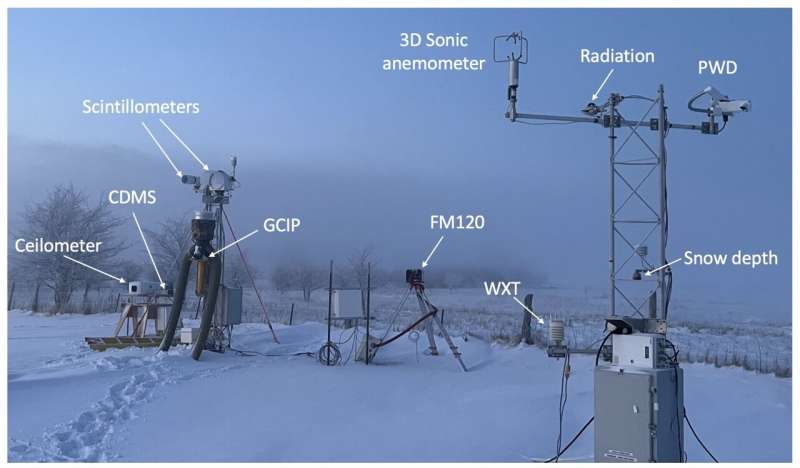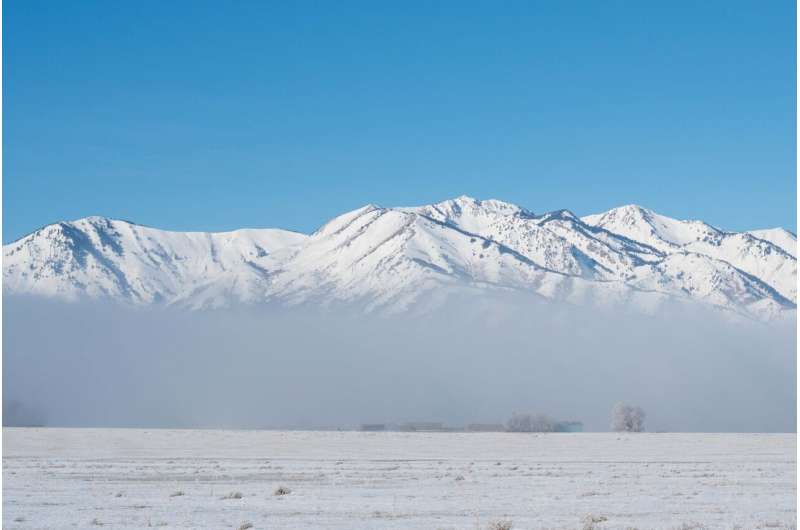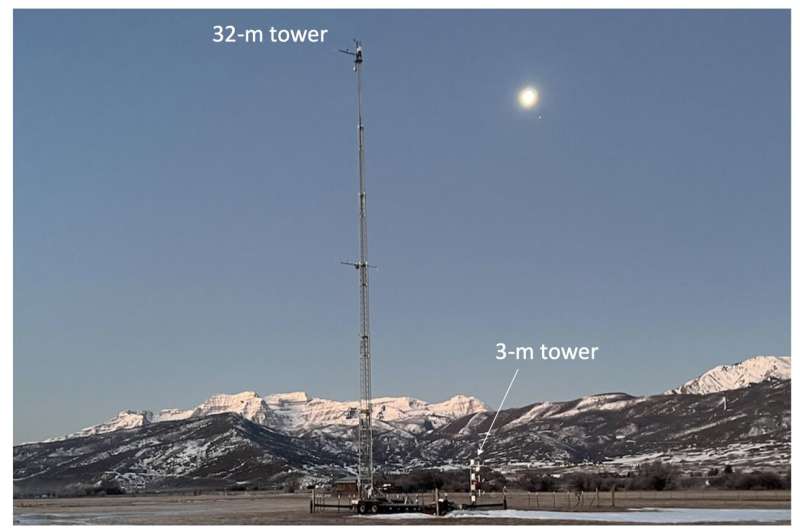This article has been reviewed according to Science X's editorial process and policies. Editors have highlighted the following attributes while ensuring the content's credibility:
fact-checked
peer-reviewed publication
trusted source
proofread
Researchers shed new light on how fog forms in mountainous areas

Of the world's various weather phenomena, fog is perhaps the most mysterious, forming and dissipating near the ground with fluctuations in air temperature and humidity interacting with the terrain itself.
While fog presents a major hazard to transportation safety, meteorologists have yet to figure out how to forecast it with the precision they have achieved for precipitation, wind and other stormy events.
This is because the physical processes resulting in fog formation are extremely complex, according to Zhaoxia Pu, a professor of atmospheric sciences at the University of Utah.
"Our understanding is limited. In order to accurately forecast fog we should better understand the process that controls fog formation," said Pu, who led a fog study focusing on a northern Utah valley.
Now, in a recent paper published by the American Meteorological Society, Pu and her colleagues have reported their findings from the Cold Fog Amongst Complex Terrain (CFACT) project, conceived to investigate the life cycle of cold fog in mountain valleys.
Also working on the project were several other members of the U Department of Atmospheric Sciences, including Gannet Hallar and Sebastian Hoch, along with Eric Pardyjak of the Department of Mechanical Engineering, a group of scientists from the National Center for Atmospheric Research (NCAR), and Dr. Ismail Gultepe from Ontario Tech University, Canada.
Because it reduces visibility, fog poses serious hazards to the traveling public. For example, fog is the second leading cause of aircraft accidents after high winds. It leads to automobile crashes and disrupts ferry operations.

Between 1995 and 2004 in the United States, 13,720 have died in fog-related accidents.
Improving fog forecasting would make traveling more safe, Pu said.
Today, most forecasting uses a computer model known as Numerical Weather Prediction (NWP), which processes massive meteorological observations with computer models to output predictions for precipitation, temperature, and all sorts of other elements of the weather. However the current computer model doesn't work well for fog, and Pu's team hopes that improvements can be made using the masses of data they gathered over seven weeks in the winter of 2022 at several sites in the Heber Valley.
"Fog involves a lot of physics processes so it requires a computer model that can better represent all these processes," Pu said. "Because fog is clouds near the ground, it requires a high-resolution model to resolve it, so we need models at a very fine scale, which are computationally very expensive. The current models (relatively coarser in resolution) are not capable of resolving the fog processes, and we need to improve the models for better fog prediction."
Located bout 50 miles southeast of Salt Lake City, Heber Valley is nestled behind the Wasatch Mountains and framed by two major reservoirs on the Provo River.
This scenic basin is a typical mountain valley, hemmed by Mt. Timpanogos and other high peaks, with the reservoirs serving as a moisture source. The seven-week study window covered the time of year when Heber Valley is the foggiest.
Valley fog is a perfect example of how topography and atmospheric processes converge to create a distinctive weather phenomenon.

The ground is cooling overnight while denser, cooler air drops from mountain tops collecting in the valleys, in a phenomenon known as "cold air drainage." Cooled by the ground, the dropping air temperature can approach the dew point, and if there is sufficient moisture in the air, fog begins to form, becoming the most dense around sunrise when surface temperatures are lowest.
Winter nights create favorable conditions for different forms of fog, such as cold-air pool fog, ephemeral mountain valley fog and radiative ice fog.
The Heber Valley project homed in on cold-air fog which forms in freezing temperatures below zero degrees Celsius, according to Pu. However by observing how these varying kinds of fog form and dissipate, the researchers are continuing to learn about the meteorological conditions and physical processes governing the formation of fog.
For the CFACT study, the NCAR and U team set up two major data-collecting stations, one near Deer Creek Reservoir and another a few miles up the Provo River. These are low spots in the valley, about 5,450 feet above sea level, that see the densest fog. These sites were equipped with 100-foot towers to support an array of instruments that captured various meteorological data associated with humidity, wind, visibility, temperature, even snow depths, and soil moisture. The recordings were made from both in situ and remote-sensing platforms.
Additionally, the team recorded a lesser array of data points at nine satellite sites.
During the seven-week CFACT field campaign, nine intensive observation periods (IOPs), each conducted over 24-hour periods, yielded a dataset that included high-frequency radiosonde profiles, tethered balloon profiles, remotely sensed thermodynamic and wind profiles, surface meteorological observations and microphysical and aerosol measurements.
Besides fog IOPs, the variety of non-fog IOPs provided valuable observations for understanding near-surface inversion, ice crystal formation, moisture advection and transportation, and stable boundary layers over complex terrain, all of which are essential factors related to fog formation. Comprehensive studies are ongoing for an improved understanding of cold fog over complex terrain.
The study appeared Nov. 15 in the Bulletin of the American Meteorological Society. U researchers involved with the study included Zhaoxia Pu, Sebastian Hoch, A. Gannet Hallar, Rebecca Beal, Geraldo Carrillo-Cardenas, Xin Li and Maria Garcia of the Department of Atmospheric Sciences and Eric Pardyjak and Alexei Perelet of the Department of Mechanical Engineering.
More information: Zhaoxia Pu et al, Cold Fog Amongst Complex Terrain, Bulletin of the American Meteorological Society (2023). DOI: 10.1175/BAMS-D-22-0030.1
Journal information: Bulletin of the American Meteorological Society
Provided by University of Utah





















